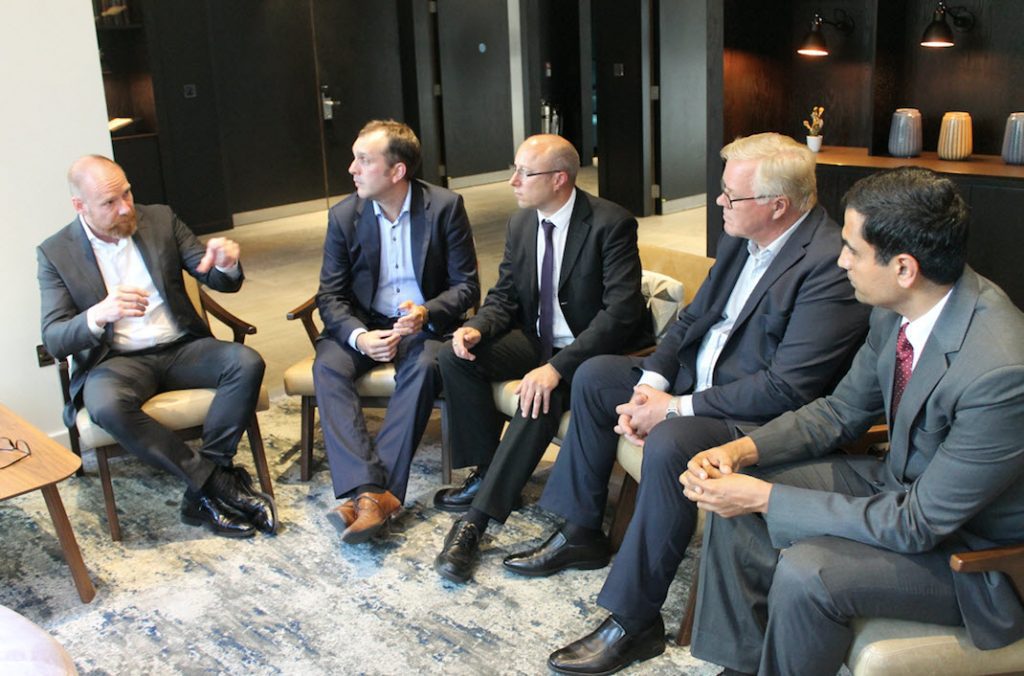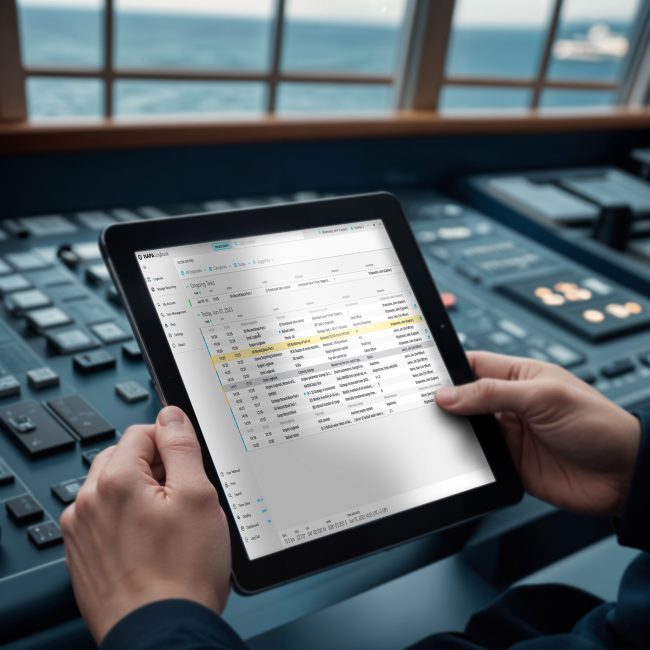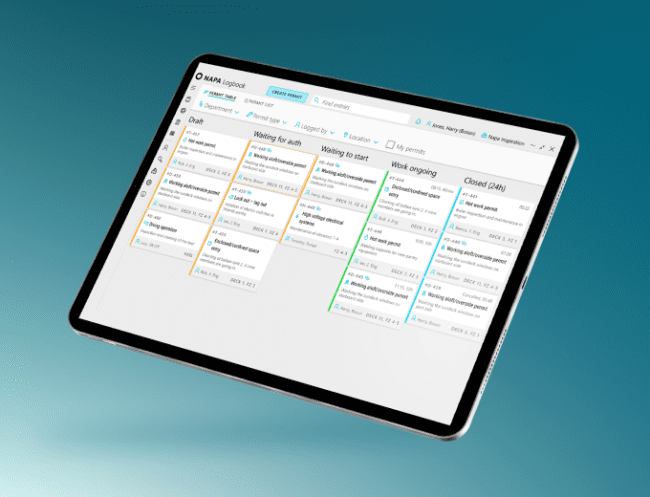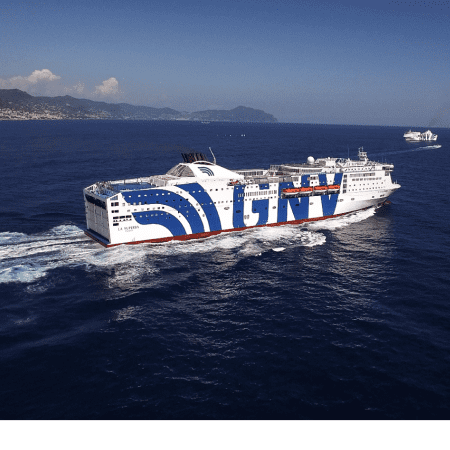The biggest challenges to IoT adoption have been overcome say NAPA, Danelec Marine, ClassNK and Inmarsat
Helsinki, Finland – 02 July 2018
The technology already exists to avoid accidents and deliver business benefits, conclude shipping tech leaders – but perceived cost and wariness of data sharing remain barriers to adoption
NAPA, global maritime software, services and data analysis provider, teamed up with Danelec Marine, the manufacturer of Voyage Data Recorders (VDRs), ECDIS and ship-to-shore data solutions, leading classification society ClassNK, and Inmarsat, the world’s leading provider of global, mobile satellite communications, to debate the Internet of Things’ potential to reshape the maritime industry.
For Ilmo Kuutti, President of NAPA, this is driving real change in the industry. “The availability of AIS data is already helping avoid some of the biggest challenges, such as rush-to-wait, and we’re consistently seeing that increasing transparency of ship operation is a powerful motivating force in driving greater vessel efficiency.”
A wariness towards data-sharing and transparency continues to be a barrier; however, Kuutti noted that attitudes were changing quickly as the benefits of data became more widespread. “Five years ago shipowners didn’t want to discuss where their ships were sailing. Now with AIS data you can see where they are at all times. More data is available, and more is being used when it becomes available,” he continued. “The EU’s MRV requirements will also drive a lot of technology uptake that will deliver valuable statistical data.”
The panel quickly reached a consensus that the main initial challenges for IoT adoption have been overcome. As Hans Ottosen, CEO of Danelec Marine, said, “In order to have a really good solution in terms of performance optimisation and cost efficiency, you’ve needed to have high, frequent data collection. Until now that has been a bottleneck.”
“IoT installation is the simple part. For the basic IoT you’ll use existing sensors, and sometimes you’ll install additional ones, such as a flowmeter, to get to the next level. But at the beginning it’s about connecting the pre-existing sensors, and that usually only takes about a day.”
Vikrant Sharma, Lead Business Strategist at ClassNK, agreed with these points and predicted that in the next five years we’ll see “…more and more connected ships driven by lowering costs and capabilities to share more data. This is also likely to lead to more remote operations.” But as Mark Warner, Head of Marketing Communications at Inmarsat, noted, “There’s major polarisation between the leaders and laggards in IoT implementation.”
What will it take to get to the next level? For Sharma, it will be “an open platform to access data from ships safely, easily and efficiently will help further enhance development and operation of ship services. Further, a consortium of stakeholders in the value chain working together on an open platform will foster innovation and creating new value. If you want to get to the next level, you need to co-create value.” This was echoed by Mark Warner, Head of Marketing Communications at Inmarsat, who added that “Change is leadership driven. It has to be pushed from the board down.”
Ottosen noted that increased uptake will have a lot to do with owners’ and operators’ increasing awareness of what they’ve been missing. As he explained, “Each time you have an accident, there are usually 20 near misses. Currently we’re not learning from the near misses, but only when there’s a serious incident. A classic example is the Rena grounding in New Zealand. Rena had crossed the reef many times before, but the dangers signs were missed until it was too late. If there had been good IoT monitoring this accident could have been avoided.”
Ilmo Kuutti, went on to highlight one more example of the low hanging fruit available to shippers: “It is still very common for ships to travel faster than they need during the early stages of their voyages, and then wait for considerable time at anchor. Greater than 5% improvements can be easily gained just through better planning and execution.”
When asked what they saw as the biggest issue holding back investment, the panel was unequivocal: perception of cost, and the need for IoT skillsets to improve among onboard and shoreside users.
“IoT will be a team effort between the captain, the charterer, the weather information provider, who will together create the best possible operations.”
As Ottosen said, “Cost is always the first issue. Many companies remain traditionally minded, and they’re not looking to really understand IoT’s benefits. This means that they aren’t bringing in the right skills or training, and aren’t going to see the upside,” he said.
Taking that point a step further NAPA’s President, Ilmo Kuutti, mentioned the need there will be for social skills. “IoT will be a team effort between the captain, the charterer, the weather information provider, who will together create the best possible operations. Airline pilots are communicating throughout their voyages, and we need to encourage our ships’ crews to do the same.”
Note to Editors:
To view this IoT in Shipping webinar, please click here.

Image: IoT in Shipping webinar panelists (from left to right):
Hans Ottosen, CEO of Danelec Marine,
Mark Warner, Head of Marketing Communications at Inmarsat,
Host: Martyn Wingrove, Editor at Marine Electronics and Communications,
Ilmo Kuutti, President of NAPA,
Vikrant Sharma, Lead Business Strategist at ClassNK
***
About NAPA
In its nearly 30 years of operation, NAPA has become a global leader in software, services and data analysis for the maritime industry; providing best in class data-led solutions for safety, efficiency and productivity in both ship design and operations. NAPA operates globally, with 11 offices across Asia, Europe and the Americas supported by its Helsinki headquarters. To date, NAPA has nearly 400 user organizations for its design solutions and over 2,500 installations onboard vessels. For more information, visit www.napa.fi.
About Danelec Marine
Headquartered in Denmark, Danelec Marine is a leading supplier of Voyage Data Recorders (VDRs), ship-to-shore data communication systems and Electronic Chart Display and Information Systems (ECDIS). Danelec Marine was one of the first companies to bring to market VDRs and Simplified VDRs (S-VDRs) to meet the original IMO carriage requirements. More than 6,000 vessels today are equipped with a VDR or S-VDR designed and manufactured by Danelec Marine. The company has service facilities with factory-trained personnel in more than 50 countries and Certified Service Centers at strategic locations worldwide. To learn more about the Danelec difference, visit www.danelec-marine.com.
About Inmarsat
Inmarsat plc is the leading provider of global mobile satellite communications services. Since 1979, Inmarsat has been providing reliable voice and high-speed data communications to governments, enterprises and other organizations, with a range of services that can be used on land, at sea or in the air. Inmarsat operates around the world, with a presence in the major ports and centres of commerce on every continent. Inmarsat is listed on the London Stock Exchange (ISAT.L). For more information, visit https://www.inmarsat.com/.
About ClassNK
As an independent third-party classification society, ClassNK offers diverse technical services including the survey and classification of ships and marine structures based on technical independently developed rules, statutory surveys performed on behalf of more than 100 flag States, management system certifications based on ISO and other international standards, as well as other services to help our clients safeguard ships, their crews, and their cargo, while protecting the marine environment. For more information, visit www.classnk.com.
Media Enquiries
Nick Arthur
BLUE Communications
T: +44 1865 514 214
E: nick.arthur@blue-comms.com


